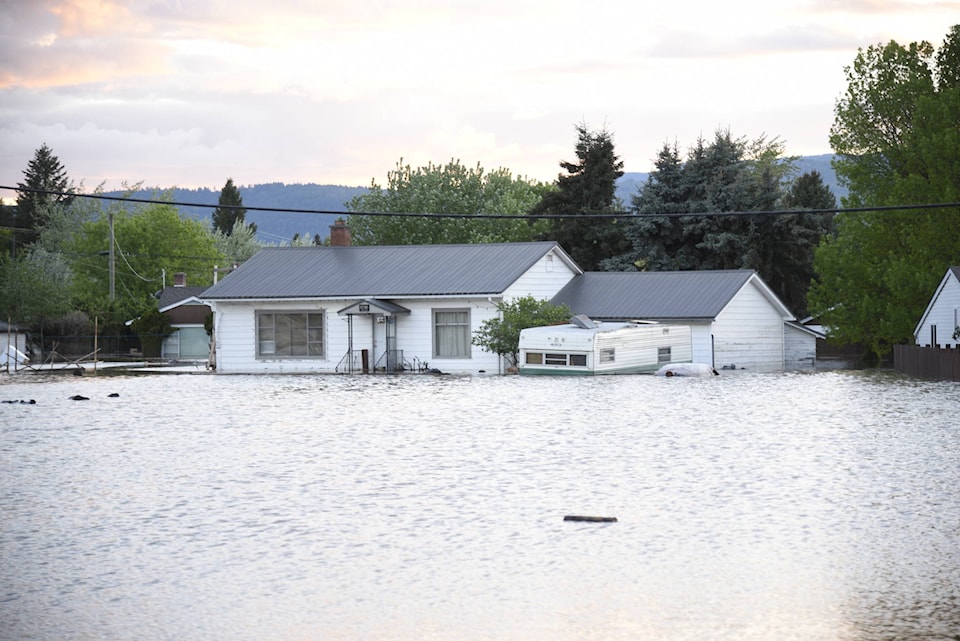NOTE: This story has been updated to reflect there is a water quality advisory for Christina Lake and not a boil water advistory.
As the Boundary gets ready to recover from historic flooding over the past week and the majority of residents get the go-ahead to go home, Interior Health and the RDKB are making resources available for residents beginning to clean up after the flood.
According to the Regional District of Kootenay Boundary, there is not, and has not been at any point during the flooding, a boil water advisory for City of Grand Forks water. The city sewage system, which has been overloaded with water at various points during the flooding, is now operating normally, according to city manager of operations Dave Reid.
Their is a water quality advisory for Christina Lake which, according to the RDKB website, was still in effect on Monday night. See the RDKB website for the most up to date information on that advisory.
The RDKB is asking residents in irrigation districts to check with their individual districts, and is advising residents on personal wells to be extremely cautious and have water professionally tested.
Flood waters and the debris, dirt and sand they leave behind can be contaminated. Residents need to wash hands with soap after contact with flood water, or after handling any item that may have come into contact with flood water.
Emergency Management BC has a complete check-list of how-tos and advice for residents following a flood online. The Ministry of Public Safety has its step-by-step guide to recovery after disaster available though the public safety and emergency prepardness website.
IH also advises that all movable furnishings be taken outside and left to dry in the sunlight. All surfaces should be thoroughly scrubbed and cleaned with hot water and detergent.
IH also advises that residents use bleach in any standing water that remains in basements as follows:Measure 2 litres of household bleach and distribute it evenly over any standing water. Stir the bleach and water together as much as possible.
Repeat this every 4 to 5 days for as long as the water remains.
When pumping basements, do not pump the area too quickly as water in the surrounding soil may cause the collapse of basement walls and/or uplifting of basement floors.
Residents are also advised not to let pets play in or drink flood waters. Residents should also avoid wearing sandals around or in flood water.
Interior Health advises residents that food products should almost always bee thrown out after coming into contact with flood water, unless they are in waterproof and easily sanitized containers. Boxed foods, homemade preserves and fresh foods, including perishables, should be thrown out if they have come into contact with water. Canned goods should be thrown out if they show signs of water damage, seepage or a bloated can. Canned goods can be used only once labels have been removed and cans scrubbed in a sanitizing solution of diluted bleach. All food preparation utensils should be thoroughly cleaned and sanitized before use.
Cleaning supplies are available through the Red Cross reception centre at the curling club. A complete list of resources for residents from IH as well as Emergency Management BC is available on the RDKB website at rdkb.com.
